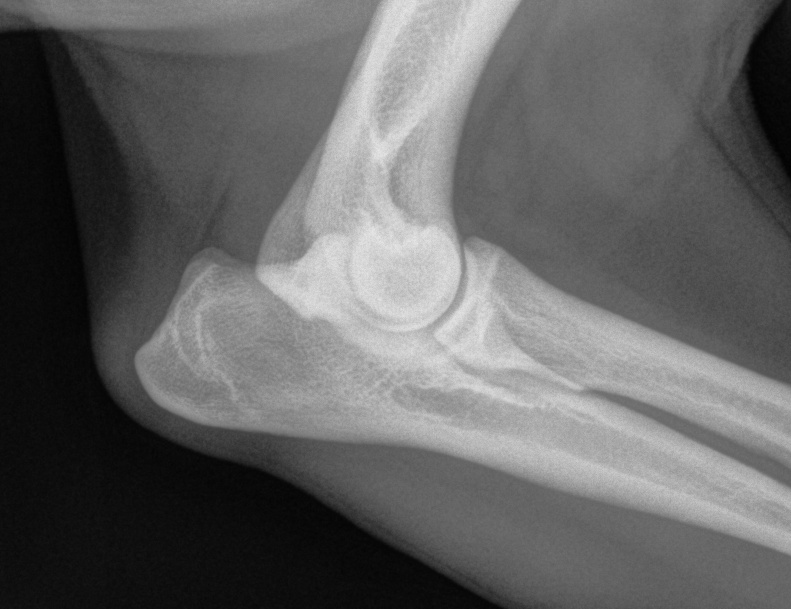February's case of the month is the very sweet Tilly, a mild mannered, nine and a half year old Shetland Sheepdog or “Sheltie” as they are more commonly known. She came to Oak barn Vets suffering from a limp in her left foreleg which seemed to have come on quite suddenly. Tilly loves her ball and is generally an active dog but when Louise saw her she had developed quite a hobble.
Typical for her breed Tilly was very brave for her examination which showed that she had a reduced range of movement in both elbows of her forelimbs being worse on the left side. She also had quite marked thickening around both elbow joints.
Given that her signs pointed to a more chronic condition rather than an acute injury it was suggested that Tilly’s forelimbs were x-rayed to see what changes were present and to help diagnose the cause of her lameness.
After sedation x-rays were taken of Tilly’s elbows and it was immediately apparent that she had severe changes in both elbows consistent with chronic joint inflammation or arthritis.
The picture below is of a normal elbow and immediately below you can compare it to Tilly's elbow.

Arthritis as a description simply means inflammation within a joint and several different forms exist. In dogs the most common form is osteoarthritis which occurs secondary to wear and tear in active dogs, underlying growth abnormalities or after joint injury and surgery. Other forms tend to be more aggressive and include septic arthritis where infection is present and immune-mediated arthritis which often affects multiple joints and sometimes in young animals.
The changes seen on Tilly’s elbows were so severe that there was a suspicion that a cause other than wear and tear osteoarthritis was present. Further x-rays were taken of her other joints as well as her chest and spine which suggested that the problem was mainly limited to her elbows.
A blood test was taken to screen for Rheumatoid arthritis, a condition causing severe arthritis in people but much less common in dogs. Thankfully this was negative and she was otherwise found to be in good health.
Due to the severity of changes on Tilly’s x-rays copies were sent to Fitzpatrick Orthopaedic Referral Centre for a second opinion and one of their senior Vets Mike Farrell examined them. He was also surprised by the severity of changes on Tilly’s x-rays and asked to examine Tilly at Oak Barn Vets with a view to take some samples of joint fluid from her elbows.
Sampling joint fluid (arthrocentesis) is a relatively straight forward procedure in normal or acutely inflamed joints but when the joint is chronically affected, like Tilly’s elbows, it becomes much more difficult. Samples were taken from both elbows and sent to our pathologist who confirmed that Tilly was indeed suffering from osteoarthritis, all be it a pretty severe form.
At the time of sampling long-acting anti-inflammatory medication was injected into Tilly’s elbows to help improve her comfort. Since she has started treatment Tilly is enjoying her exercise much more comfortably and her mobility has improved considerably.
In the long term; although we cannot cure or even stop the progression of Tilly’s condition there are many things we can do to improve her comfort and mobility and these apply to most dogs suffering the effects of chronic arthritis. These go far beyond simple pain relief and anti-inflammatories and include weight control, nutritional support, nutraceutical joint supplements and adjunctive therapies such as hydrotherapy, physiotherapy and acupuncture.
Tilly has shown us quite clearly that a dog doesn’t always have to be obviously lame to suffer the effects of arthritis and it was only because one foreleg became worse than the other that Tilly showed obvious signs. This demonstrates how stoical many of these arthritis sufferers are who seldom complain about their joint pain and stiffness but carry on chasing that ball regardless!



